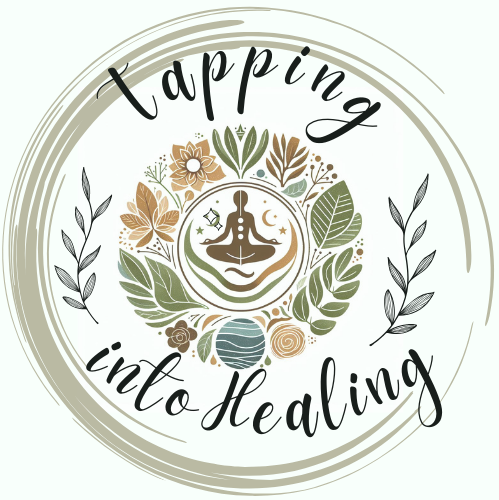
If you’ve ever felt like your heart’s racing for no clear reason, or faced a sudden, gripping feeling of fear, then you’re already acquainted with the symptoms of anxiety. It’s not just a fleeting moment of worry; for some, it’s a constant battle, affecting careers, relationships, and even the simplest day-to-day activities.
That’s where Emotional Freedom Techniques (EFT), also known as Tapping, steps in. EFT is a holistic mind/body approach that has been gaining traction in the battle against anxiety. Combining principles from traditional Chinese medicine and modern psychology, this technique aims to realign your body’s energy and diminish feelings of stress.
You’re going to find out about how EFT Tapping can not only alleviate symptoms of anxiety but also works to minimize the triggers that set off those alarm bells in the first place. It’s amazing how EFT leverages acupressure points which, when tapped on and stimulated, can help lower your stress levels.
Tapping is not just a distraction or a placebo. Research studies suggest that EFT can significantly decrease cortisol levels—the stress hormone—and can lead to an array of positive outcomes, from improved mood to reduced anxiety. So, this could be a game-changer for many.
I’ll guide you through the nuts and bolts of putting EFT Tapping into practice. Whether you’re preparing to stand up in front of your class or a group of coworkers to present, or simply preparing for a challenging day at work, these strategies will help lay the foundation for a serene state of mind.
The Fundamentals of EFT Tapping for Anxiety Relief
I’m going to walk you through the basics of EFT Tapping so you can start managing your anxiety today. EFT, which stands for Emotional Freedom Techniques, is like acupuncture without the needles. Instead, you’ll use your fingertips to tap on specific meridian points on your body. If you aren’t familiar with the tapping points go to my post on EFT which covers the points and the basic recipe of tapping by clicking here.
You’ll want to begin by identifying what’s causing you stress. This could be anything from an upcoming work presentation to a personal conflict. Once you’ve honed in on your particular anxiety trigger, keep it in mind throughout the EFT process.
As you tap, you’ll start with a set up statement that identifies the problem along with an affirmation. For example, if you’re anxious about public speaking, you might repeat, “Even though I’m nervous about my presentation, I deeply and completely accept myself.” As you move through the tapping points you will say a reminder phrase to help you stay focused on the problem. Staying focused on the problem while tapping helps you to clear the negative energy from it and counteract the negative emotions you’re feeling.
Consistency is key. Tapping once won’t magically cure all anxiety, but regular practice can significantly reduce stress levels over time. You can tap anywhere as needed, but having a set time and a regular practice with a quiet space where you can focus on your tapping session without interruptions could be helpful.
You can always adjust your approach down the road, but starting with these basics will put you on the path to controlling your anxiety. Now, in the next section, we’re going to explore some real-life success stories from individuals who’ve used EFT Tapping to reclaim peace in their lives.
Support For EFT In The Research And In Practice
Personal stories of transformation are powerful. They not only show us what’s possible but also provide the encouragement needed to embark on our own journey of healing. I’ve worked with many clients who have used EFT to not only lower anxiety but also let go of phobias, anger, traumatic memories, and more.
Researchers have studied EFT’s effect on anxiety levels, and the findings have been noteworthy. Clinical sessions followed by self-practice at home have shown a significant reduction in anxiety levels in participants, often with lasting effects. Articles on research can be found at NIH, National Library of medicine, here is a link to one of many research articles showing the efficacy of use of EFT as an evidenced – based practice for psychological and physiological conditions – https://pubmed.ncbi.nlm.nih.gov/36438382/
Expert opinions carry weight. Mental health professionals have begun incorporating EFT as a complementary approach to traditional therapies, noting its ease of use and the empowerment it provides to clients.
What’s more, the documented experiences often highlight the long-term advantages of consistent EFT practice. Many report not only a decrease in anxiety symptoms but also an increase in overall emotional resilience.
Remember, these stories aren’t exceptions; they’re becoming the norm as more people embrace EFT. Transitioning from this section, we’ll explore how you can further enrich your EFT practice and dive into some advanced techniques and additional resources in the next section.
Enhancing Your EFT Practice: Advanced Techniques and Resources
If you’re looking to deepen your EFT Tapping for anxiety relief, incorporating advanced techniques can significantly enhance your practice. Here are some strategies that may offer additional benefits.
Try blending mindfulness meditation with your Tapping sessions. This combination can reinforce the calming effects and help center your thoughts more deeply.
There are also plenty of digital resources at your disposal. From apps that guide you through Tapping sequences to online communities where you can share experiences, these tools keep you engaged and motivated.
While EFT is generally safe and easy to practice on your own, sometimes it’s beneficial to seek professional guidance. If your anxiety symptoms persist or you’re dealing with particularly challenging emotions, consult with an EFT practitioner.
Remember, you’re not alone on this journey. Building a support system through engaging with the EFT community can provide encouragement and foster a sense of shared progress.
